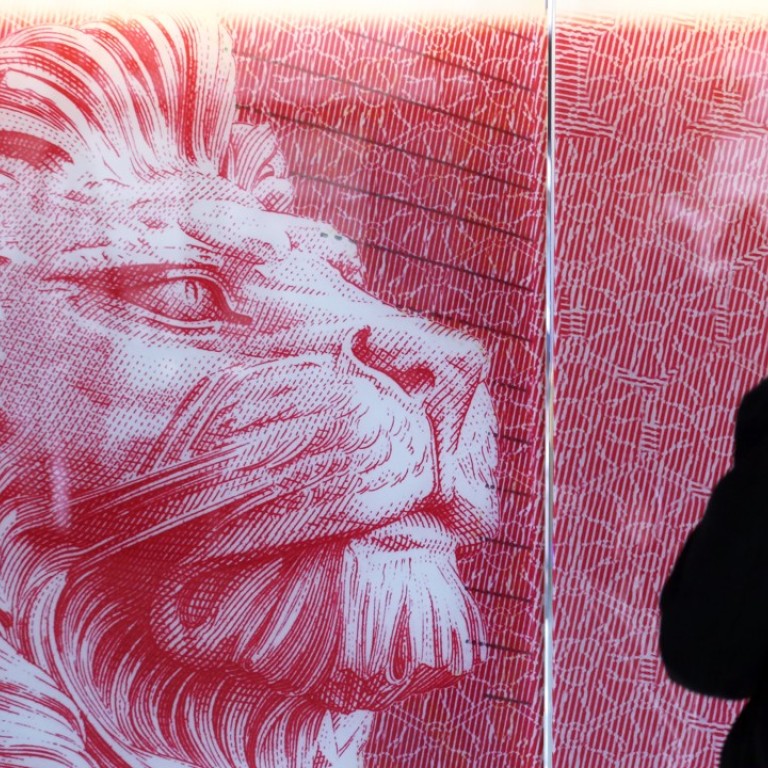
HSBC fails to impress with US$2 billion share buy-back and first-quarter financial results
It set aside US$897 million in relation to the US inquiry about its sale of mortgage-backed securities during the financial crisis
HSBC Holdings’ US$2 billion stock buy-back plan, the only one planned in 2018, failed to impress investors after Europe’s biggest bank delivered first-quarter financial results that were largely in line with expectations.
The bank’s shares tumbled in Friday afternoon trading after earnings were announced, ending the day 3.7 per cent lower at HK$74.85, marking the biggest single-day decline since February 2017.
Pre-tax profit fell 4 per cent to US$4.8 billion for the quarter ended March, due to a 13 per cent increase in operating expenses from investments in digitalisation and expansion, according to the bank, which was founded in British Hong Kong more than a century ago in 1865.
Revenue increased 6 per cent to US$13.7 billion, driven by higher deposit margins, growth in retail banking, wealth management and commercial banking in Asia.
“Our primary focus is to grow the businesses safely, and we have increased investment to deliver that aim,” Chief Executive John Flint said in a statement.
The bank’s net interest income rose 2.6 per cent from a year ago to US$7.456 billion, with the net interest margin rising 4 basis points from last year, HSBC said.
Adjusted pre-tax profit fell 2.9 per cent to US$6.03 billion, matching a consensus estimate of US$6 billion, while the adjusted revenue was US$13.9 billion. The bank has proposed to pay a first interim dividend of US$0.10 per share.
The bank has announced four buy-backs since 2016, buying a combined US$5.5 billion of shares in the previous three occasions.
HSBC said it’s in “active discussions” with the US Department of Justice about solving civil claims based on the department’s investigation of HSBC’s legacy RMBS securitisation activities. The bank has put aside US$897 million for legal and regulatory settlements for the first quarter, with a caveat.
“There can be no assurances, however, as to how or when this matter will be resolved, or whether this matter will be resolved before the commencement of formal legal proceedings by the DoJ or whether the ultimate loss will exceed the provision,” the bank said.
Still, the bank – the largest foreign bank operating in China – increased its investments on the mainland and in the UK in retail banking and wealth management. It also made what it called “strategic hires” in its onshore Chinese securities venture, and invested to improve the digital capabilities in all global businesses.
“We continue to benefit from interest rate rises and economic growth, particularly in Asia,” Flint said.
He added that commercial banking had made “notable progress” in Hong Kong and the UK, while retail banking and wealth management made further headway in the UK mortgage market.
Ian Mackay, the group finance director at HSBC, said based on the daily traded volume he had observed over the previous buy-back, he expected the latest US$2 billion buy-back programme to be completed by the early part of the third quarter.
After that, the bank might consider tapping the debt capital market for US$1 billion to US$1.5 billion in additional tier 1 capital during the second half of the year. At the end of this quarter, the bank’s common equity tier 1 ratio was at 14.5 per cent.

Commenting on the bank’s return on equity, which was at 7.5 per cent, lower than the 8 per cent reported a year ago, Flint said that while HSBC remained committed to improving returns to its previously disclosed target of 10 per cent, it was unlikely to achieve this target in 2018.
“In Q1, we increased investment in retail banking and wealth management to further grow our market share in the UK and mainland China … and invested to enhance our digital capabilities in all our global businesses,” Flint said during the disclosure of the bank’s earnings results on Friday.
Our primary focus is to grow the businesses safely, and we have increased investment to deliver that aim
“But revenue that can be captured from these investments is measured over two to four years, rather than over the next three quarters,” Mackay said at a media call on Friday.
For the rest of this year the bank will continue to invest in technology to support growth opportunities. It will continue to invest in technology to support its UK mortgage business, which grew to a US$126 billion business in gross balance in the first quarter, out of its global personal loan gross balance of US$388 billion.
In retail banking and wealth management, its top revenue generator but second largest pre-tax profit after commercial banking, customer deposits and lending were up by 4 per cent and 8 per cent, respectively, from a year ago. Both increases were recorded mainly in Hong Kong and the UK.
Amid the interest rate increase cycle, Mackay said he did see some tightening of customers’ “resources”, although he maintained that assessing borrowers’ loan affordability remained an important loan underwriting assessment for the bank.
Meanwhile, the bank’s net interest margin improved by 4 basis points from end of 2017, to 1.67 per cent, as higher interest rates contributed to higher lending yields. About 65 per cent of its lending book is at variable rates.


